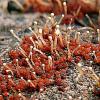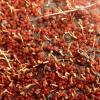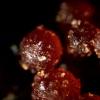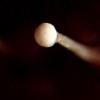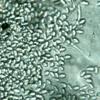
29-10-2012 15:07
Esquivel-Rios EduardoNectria stilbellae is classified in Nectria subg.

26-10-2012 07:21
Cvenkel MiranOn fraxinus excelsior?, no bark, covering big surf

26-10-2012 10:59
Gilbert MOYNEBonjour,Sur feuilles de Populus tremula de l'anné

24-10-2012 02:35
Renée LebeufBonjour à tous, J'aimerais vous soumettre cet as

26-10-2012 00:51
Esquivel-Rios EduardoHi AllThis Xylaria, found in decaying logs, has as

24-10-2012 05:33
Cvenkel MiranLoc.: Slovenia, on ground facing fraxinus excelsio

25-10-2012 17:21
Zykova MashaHi All!Few days ago I found a small disco(fruitbod
Nectria stilbellae
is classified in Nectria subg. Dialonectria SACC.(SAMUELS & al., 1991). Species in this group are characterized by
having superficial, usually smooth, red perithecia the wall of which
is less than 25 urn wide.
Nectria stilbellae is distinguished primarilyby its anamorph and is most closely related to
N. consors (SAMUELS,1977),
N. camelliae (SHIPTON) BOESEWINKEL (SHIPTON, 1979; BOF.SEWINKEL,1982), and the
Nectria species that haveDescription ettsils in: http://www.landesmuseum.at/pdf_frei_remote/Sydowia_43_0249-0263.pdf
The anamoph, sTilbella aciculosa (ELLIS & EVERHART) SEIFERT have Conidia ellipsoidal-fusiform5—7(-9) x 2.5-3 microns.
This fungi was reported in Panama and cta RIca by SEifert. in 1985; SEIFERT, K.A. (1985). A monograph of
Stilbella and some allied hyphomycetes. - Stud.Mycol. 27: 1-235.
262

Your fungus looks like Nectria pseudotrichia, what is the size and shape of ascospores?
Christian

Are the ascomata changing of color in 3% KOH or lactic acid? if so, what is this coloration?
Moreover, could you please to say what is the size of conidia and provide an image of the ascospores?
Christian
